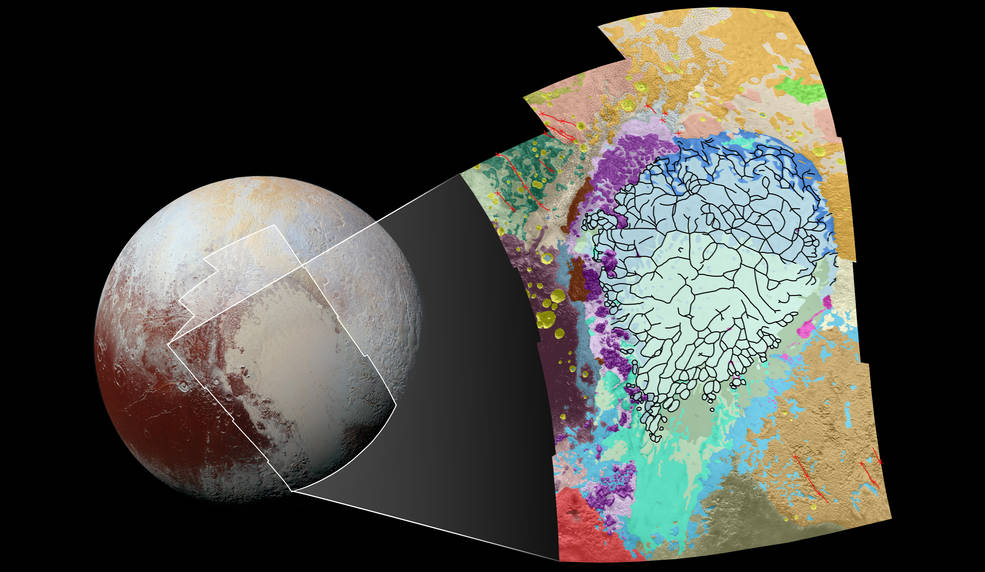NASA Maps Geology of Pluto's 'Heart'

A newly created geological map of Pluto's famous heart-shaped region shows just how varied and complex the distant dwarf planet is.
Scientists on NASA's New Horizons mission, which performed the first-ever flyby of Pluto on July 14, have put together a color-coded geological map of Sputnik Planum, the huge nitrogen-ice plain that occupies the left side of Pluto's heart-shaped Tombaugh Regio.
The map covers an area that stretches 1,290 miles (2,070 kilometers) from top to bottom and features a resolution of at least 1,050 feet (320 meters) per pixel, NASA said. (Some parts of the map are even sharper than that.)
The newly released map allows researchers to see variations in Pluto's terrain, which, in turn, can provide insight into the geological history of the dwarf planet.
For example, the bright yellow regions on the map are impact craters, which are notably absent from Sputnik Planum proper. This suggests that this portion of Pluto has been resurfaced recently; there hasn't been time for craters to pepper the surface there, scientists have said.
Other colors show different kinds of terrain, which are defined by their texture and form. One area coded with a greenish hue is defined as "featureless plains," while very light blue denotes "bright, cellular plains."
The black lines are troughs, which delineate "cells" of nitrogen ice on Sputnik Planum that are thought to form as a result of convective processes.
Breaking space news, the latest updates on rocket launches, skywatching events and more!
The red area at the southern tip of the map shows the 2.5-mile-high (4.0 km) Wright Mons, which might be a volcano that spews ice rather than lava. Scientists aren't sure why the material around it, which looks reddish-brown in New Horizons' "true color" photos, isn't more widespread on the surface, NASA officials said.
To make this map, New Horizons team members used the spacecraft's Long Range Reconnaissance Imager (LORRI), taking pictures at a distance of 48,000 miles (77,300 km) from Pluto on July 14. At the time, New Horizons was less than 2 hours away from its closest approach, which brought the probe within just 7,800 miles (12,550 km) of Pluto's surface.
You can Follow Jesse Empsak @Mad_Science_Guy. Follow us @Spacedotcom, Facebook or Google+. Originally published on Space.com.

Jesse Emspak is a freelance journalist who has contributed to several publications, including Space.com, Scientific American, New Scientist, Smithsonian.com and Undark. He focuses on physics and cool technologies but has been known to write about the odder stories of human health and science as it relates to culture. Jesse has a Master of Arts from the University of California, Berkeley School of Journalism, and a Bachelor of Arts from the University of Rochester. Jesse spent years covering finance and cut his teeth at local newspapers, working local politics and police beats. Jesse likes to stay active and holds a fourth degree black belt in Karate, which just means he now knows how much he has to learn and the importance of good teaching.

